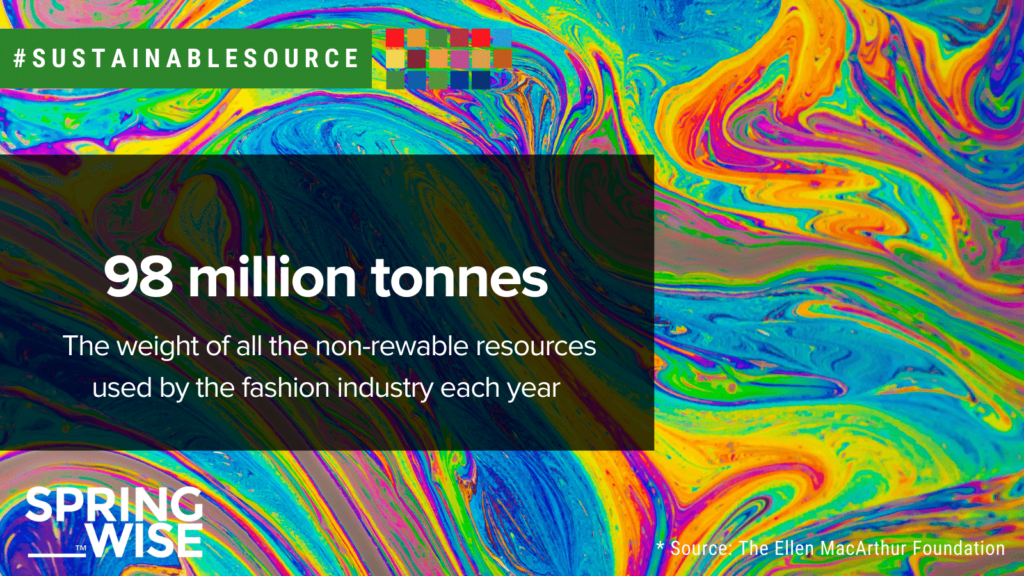The clothes we wear have an enormous impact on the planet. The entire fashion supply chain is estimated to contribute 8 to 10 per cent of global greenhouse gas emissions, and fashion is the second most water-intensive industry on earth, consuming roughly 79 billion cubic metres of water per year. Fashion also faces social problems such as modern slavery, due to its long supply chains over which brands do not have full control.
These challenges have caused some to question whether fashion can ever be sustainable. But every individual person can make a difference through their choices, and consumers are increasingly acting as a driver of change. According to one survey, 57 per cent of consumers have made significant changes to their lifestyles to lessen their environmental impact. And innovators are finding ingenious solutions that meet their changing demands.
Springwise has spotted fashion innovations that not only improve the sustainability of fashion in a narrow sense, but contribute to the achievement of the United Nations Sustainable Development Goals (SDGs) more broadly. Fashion, like many industries, needs to change (and fast) if these goals are to be met. But innovators are inspiring hope that the necessary changes are not only possible but beneficial.
SDG 12: Responsible consumption and production
One of the most important SDGs for the fashion industry is SDG 12, which calls for the decoupling of economic growth from increasing resource consumption. Fashion uses 98 million tonnes of non-renewable resources each year, and only 12 per cent of the material used in clothing is currently recycled. There is therefore a clear need to move towards more circular practices in the industry, which will require the input of both consumers and manufacturers. Innovators are facilitating this process.
On the manufacturer’s side, Italian luxury fabric company Manteco is transforming pre-consumer scraps, post-consumer garments and, industrial waste into soft, durable and sustainably coloured yarns and fabrics. Meanwhile, B2B matchmaking platform Uptrade pairs those wishing to buy fabric with textile manufacturers and fashion labels that have excess fabric in their inventories. On the consumer side, fashion brand Samsøe Samsøe is stitching ‘Resell Tags’ into its garments. These contain a QR code that, when scanned, automatically generates a resale advert for Facebook and Instagram marketplaces.

SDG 14: Life below water
You may not immediately draw a link between your favourite coat and the sea’s riches, but several innovators are exploring how fashion can be used as a tool to promote marine biodiversity. Meanwhile, others are working to minimise the impact of fashion waste on life beneath the waves.
Florida-based startup Inversa is making an alternative leather out of lionfish – an invasive species that threatens the health of Florida’s coral reefs. Elsewhere, Canada’s Lezé the Label is making comfortable officewear from another threat to marine eco-systems: discarded fishing nets. Ocean plastic is yet another problem with one study calculating that there are 24 trillion microplastic particles in the world’s seas. It is therefore important that fashion brands avoid plastic where they can, and German startup LOVR has developed a completely plastic-free alternative to animal leather.

SDG 10: Reduced inequality
Efforts to increase the positive impact of fashion are not limited to the materials and processes used to make clothing and accessories. Fashion can also be an effective tool for tackling social issues.
SDG 10 promotes social, economic, and political inclusion regardless of factors such as race and ethnicity, and several fashion innovators are working towards this goal. UK-based Yard + Parish is promoting black-owned luxury fashion brands through curated offerings of fashion, beauty, wellness, and homeware products. And, in the US, e-commerce platform Black Owned Everything is both a marketplace and media culture hub that empowers a diverse community of creators.
SDG 5: Gender equality
The power of fashion to promote social change also extends to gender equality. SDG 5 stresses the need to eliminate all forms of violence against women and girls. To this end, Danish startup Shift has developed connected jewellery that doubles as a personal safety device.
Economic empowerment of women is another focus of SDG 5. Social enterprise Alsama Studio employs female refugee artisans to embroider old clothes, turning them into exciting new looks. The income the women earn through their studio work is often the only funds available to their families. And in Malaysia, accessory brand Earth Heir works closely with refugees and local artisans to help develop their businesses. Women make up the majority of the artisans worldwide, as well as 60-70 per cent of people living in poverty.
SDG 17: Partnerships for the goals
Partnerships between the public and private sector, large and small businesses, and academic institutions, NGOs, and corporations are crucial for delivering on all of the SDGs, as is highlighted in SDG 17. And the fashion industry provides some excellent examples of partnership in action.
Ice cream brand Magnum is is at the start of a new long-term partnership focused on circularity with the Leeds Institute of Textiles and Colour. The partnership’s goal is to use cocoa waste products as a reliable, circular source of material for the fashion industry. Another project brings together 12 partners including research institutes, agricultural associations, SMEs, and large enterprises to turn food waste into bioplastic for cosmetics. And, in New Zealand, a group of like-minded organisation is exploring ways to pool resources in order to provide local cotton recycling technologies.

Words: Matthew Hempstead
Looking for inspiration on sustainability? Why not visit our SDG hub page for more articles on green innovation that matters.

